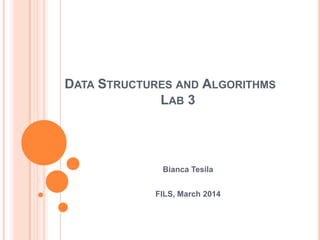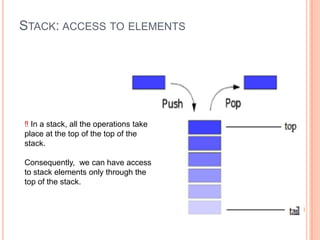This document discusses data structures and algorithms lab 3. It covers template functions, template classes, stacks, and applications of stacks. Specifically, it describes using stacks to implement converting numbers between bases and checking if a string is a palindrome. The objectives are to practice template functions, learn about stacks as an abstract data type and their basic operations, and implement additional stack methods and an application using a stack with two stacks.










